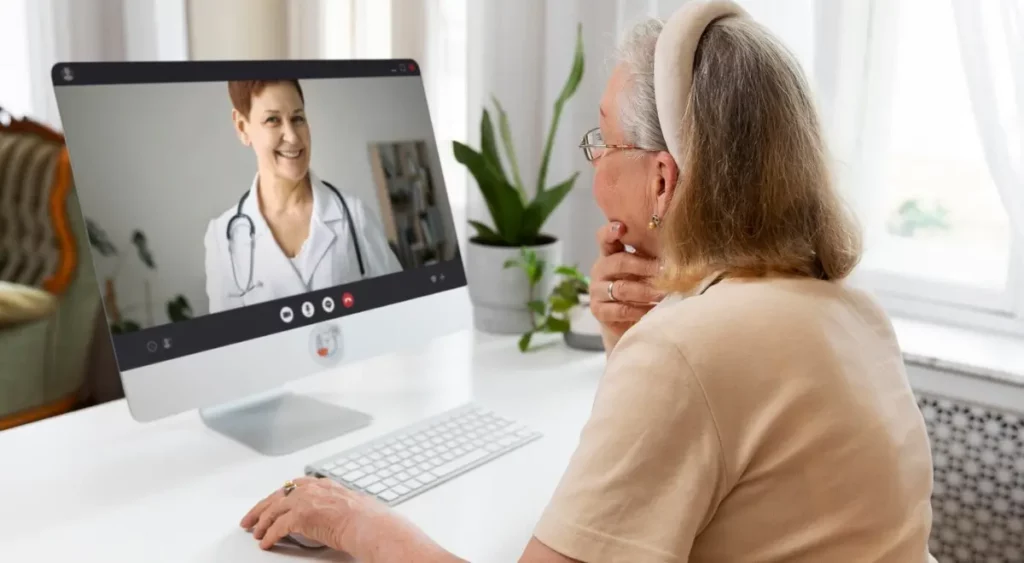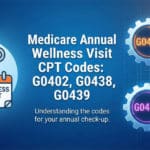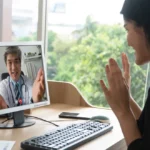4 Practical Ways to Improve RPM Engagement for Senior Patients

The modern day remote care technology is a boon, especially for senior patients who may find it overwhelming to step out of their comfort zone for the doctor’s appointment. Despite the convenience it offers, getting senior patients to engage with a medical technology is a long-standing concern. While the widespread use of smartphones and wearables, such as smartwatches has helped a lot in closing this technology gap, some seniors still struggle to interact.
If you are a healthcare provider concerned about the low engagement rate among elderly population, for telehealth initiatives such as Remote Patient Monitoring (RPM), this engagement strategy guide is all you need to follow.
Table of Contents
ToggleWhy It Is Important To Ensure Patient Engagement?
Compared to pre-Covid times, seniors nowadays are more technologically savvy. Around 61% of seniors of age 65 and older owned a smartphone in 2021, up from 46% in 2018 and only 13% in 2012. However, despite the fact that seniors are rapidly adopting new technologies, nearly 4 in 10 are not technologically advanced enough or lack digital literacy to participate in an RPM program and don’t know how to take their health readings using Wi-Fi or cellular medical devices.
This is where healthcare organizations looking for an effective patient engagement strategy for remote care programs is facing a setback. Another hindrance is lack of access to internet or good cellular network. Some seniors live in rural places with limited to no internet access, while many others struggle with day-to-day device management.
In comparison to organizations that aren’t providing patient resources or technical support, those introducing RPM tools, digital resources, and 24/7 patient support are likely seeing more engagement and success rate.
Discover 4 simple strategies to boost senior participation in remote patient monitoring
Ongoing education, hands-on device setup, accessible technology, and motivational reinforcement empower older adults to embrace RPM confidently. HealthArc’s senior-centric RPM features simplify goal-setting, enhance connectivity, and support at-home health management, ensuring seniors stay engaged and in control of their wellness journey.
Ways to Ensure Successful RPM Patient Engagement For Seniors
Majority of RPM platforms understand the importance of user experience and come with clutter-free and easy to navigate interfaces that are simple to use and understand, especially for elders. But, that’s not enough. To ensure improved outcomes and better interaction, here are some ways physicians can engage their senior patients:
1. Educate The Patients During Routine Care
One of the most crucial patient engagement strategies for the successful use of RPM among seniors is to provide the right education and assistance they need at all stages, right from the enrollment to continuous support throughout.
Patient education is vital at every stage of the RPM program and it is care provider’s responsibility to ensure that patients understand what resources are available to them and how to access them.
If you’re beginning from scratch, the American Medical Association’s Remote Patient Monitoring Playbook is an excellent place to start with. Designed for healthcare professionals to develop and implement effective RPM programs, this playbook provides a helpful overview of how to include ongoing education and support into the workflows of any remote patient monitoring program.
Other than this, providing virtual help desks that can help patients in navigating the device usage and other RPM usage barriers should be prioritized by healthcare providers focused on improving patient engagement and outcomes.
2. Walk The Patient Through The RPM Program
How can providers help seniors understand RPM? As per the AMA’s remote patient monitoring playbook, an RPM program is all about the patient. As healthcare providers plan to educate patients about the program, ensure there is adequate time to set expectations, answer questions, and discuss how remote monitoring can assist them in reaching their goals.
To get started, walk them through their home setup and assign a care support member who’ll guide the seniors about their consultations. Integrating patient training into routine primary care appointments and assisting patients in distinguishing between clinical and technical aspects are important considerations to focus on.
3. Address Networking &Technology Concerns
Some seniors struggle to engage with RPM and other healthcare technology because of lack of access rather than knowledge. A critical component of a successful patient engagement plan is ensuring that the patient monitoring devices are delivered and set up correctly, with as little interference as possible.
To achieve this goal, some organizations are taking a hands-on approach, purchasing and distributing devices rather than relying on a third-party distributor, who may not value patient interaction as much as concerned healthcare providers do. Another option is to work with a device provider who can distribute RPM devices, such as glucometers, blood pressure monitors, etc. directly to the patients.
The best alternative for seniors not having access to wireless network is using cellular medical devices that can easily connect to a local cellular network and are easy to operate. Provide patients with the knowledge required to use FDA approved RPM devices and help them understand how they improve patient care.
4. Motivate Seniors In Their Healthcare Journey
Patient engagement doesn’t always mean providing them the devices and guidance they need, but also about motivating and supporting them in the healthcare journey. Chronic illnesses can make seniors, especially those with mobility issues, feel depressed and alone. By motivating them to record their readings on a daily basis, and getting back to them with positive feedback can actually make them feel more engaged and empowered in their healthcare program.
Consider using techniques like motivational assessment to understand patient goals and generate excitement around how remote patient monitoring will help them reach those goals and identify what will motivate them to continue participating in their care management.
Frequently Asked Questions On Senior Engagement
The most common challenges are unfamiliarity with technology, problems with connectivity, and fear of data being shared. Important ways to overcome these are educating patients and using user-friendly devices.
Yes. Cellular-enabled RPM devices enabled by HealthArc can work without in-home Wi-Fi and thus provide easy access.
It helps in the monitoring of chronic diseases, decreases unnecessary visits to the clinic, and facilitates timely intervention based on real-time health data.
Set Up A Successful RPM Program With HealthArc
Remote Patient Monitoring for seniors can be highly successful when providers focus on education, accessibility, motivation, and support. Platforms like HealthArc help streamline this process through cellular devices, analytics, and user-friendly engagement tools.
HealthArc is a leading digital health platform supporting healthcare providers in implementing scalable RPM programs, including cellular device deployment and real-time data insights assisting patients and healthcare providers with top-notch remote patient monitoring services. Our team can guide you through the features and functionalities of our software to help you make the right choice.
Not only this, HealthArc provides analytics at a program level, practice level, and clinical insights, helping providers track engagement and outcomes. We also have a myriad of cellular devices that can be used outside of the US and work in over 150 countries, making them a more flexible option for patients who travel internationally.
Request a free demo or feel free to talk to our team at +201 885 5571 to explore how HealthArc’s cellular-enabled RPM platform can enhance your senior engagement programs.
Most Recent Blogs
Categories
Related Blog
- November 26, 2025 | Read Time: 14 mins
Return on Investment (ROI) of Remote Patient Monitoring (RPM): A Complete Guide for ACOs and Healthcare Organizations
The U.S. healthcare system continues its transition from fee-for-service models to value-based...
Learn More- November 24, 2025 | Read Time: 15 mins
Common RPM Pricing Models for Providers: A Profitability-Focused Guide
Remote Patient Monitoring (RPM) has rapidly emerged as one of the leading...
Learn More- October 23, 2025 | Read Time: 12 mins
How RPM Devices Improve Hypertension and Diabetes Outcomes in Medicare Populations
Remote patient monitoring (RPM) is transforming chronic care for Medicare beneficiaries. CMS...
Learn More


